
 |
|
|
Corn
Volume 63 Number 13 Date 07/26/2018 TRUE ARMYWORM - Locally heavy populations are developing in corn, barley and wheat. The infestations reported in the last two weeks have been scattered and varied in terms of severity, but many accounts indicate that larvae of all sizes are present, which may complicate control decisions. Any decision to treat armyworms should be based on the size and abundance of the larvae, and not the extent of the current damage. Sampling five sets of 20 plants (100 total) for armyworms and signs of feeding is required. Spot treatment is acceptable for infestations of two or more armyworms (3/4 to 1 inch or smaller) per plant on 25% of the plants, or one worm per plant on 75% of the plants. Treating small grains is suggested for levels of three or more armyworms per square foot, though much of the small grains acreage is reaching full maturity. Producers and advisors are reminded to cross check PHIs to make sure that the insecticide align with harvest plans. CORN ROOTWORM - Surveys this week found low average counts of 0.1-0.3 beetles per plant, with no beetles observed in 86% of cornfields sampled. In fact, very few rootworm adults have been noted so far this season. Although the risk of reduced pollination from beetle silk clipping appears low, scouting is suggested for corn with fresh silks to assess beetle levels and to determine if pollination is being impaired. Corn sites with an average count above five beetles per plant and silks clipped to less than ½ inch before pollination is complete are appropriate for treatment. The UW protocol for sampling adult rootworms is to count the number of western and northern beetles on 50 plants, examining 10 plants selected at random in each of five areas in the field. Three scouting sessions at 7 to 10-day intervals are recommended from late July through August. WESTERN BEAN CUTWORM - The western bean cutworm degree day model indicates that 75% or more of the moth population has emerged near Beloit, Madison, La Crosse, Spring Green and other advanced southern locations. Emergence is about 50% complete in the southeast and central counties where the flight likely peaked in the past week. The high count for the period of July 20-26 was 43 moths in the pheromone trap near Kingston in Green Lake County. The cumulative state count to date is 310 moths in 55 pheromone traps, which is the second lowest late July total (after 2015) since surveys for this pest began in 2005. EUROPEAN CORN BORER - Moths of the second flight continue to appear in black light traps, signaling that eggs are being deposited on corn and other hosts. Summer moth activity will likely peak across the southern two-thirds of Wisconsin by August 5. Sweet corn and non-Bt field corn should be inspected for egg masses and larvae before 2,100 degree days (modified base 50°F) are surpassed and the treatment window for second generation corn borers closes. JAPANESE BEETLE - Low to moderate infestations of 3-50 beetles per 100 plants have been observed since early July in Wisconsin corn. The greatest threat to fields at this time of year is when large numbers of beetles converge on the silks, potentially impairing pollination. Control is warranted when populations exceed three beetles per ear when pollination is occurring. CORN EARWORM - Moth counts remain low, with pheromone traps in Arlington, Beaver Dam, Marshfield and Ripon registering weekly captures of 1-5 migrants per trap. Eight other monitoring location captured no moths during the week. Protective treatment of sweet corn fields with green silks is not recommended until pheromone traps register 5-10 moths per night for three consecutive nights. -- Krista Hamilton, DATCP Entomologist 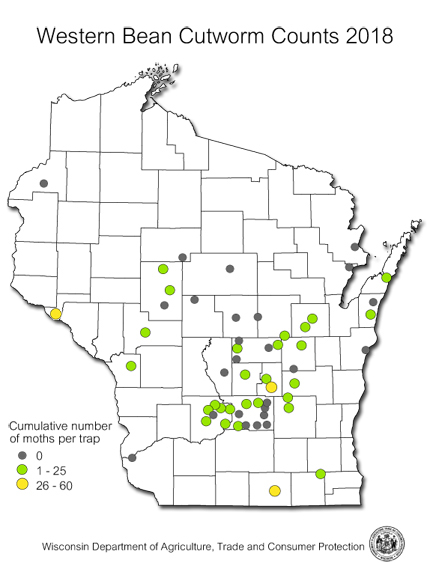
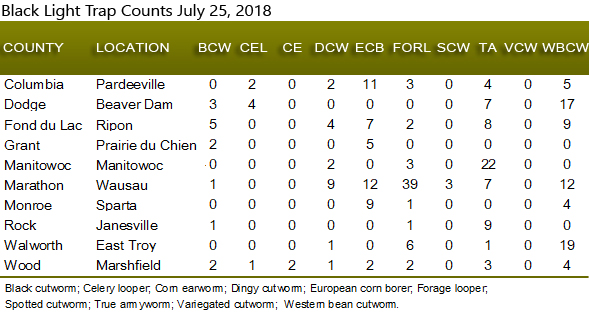
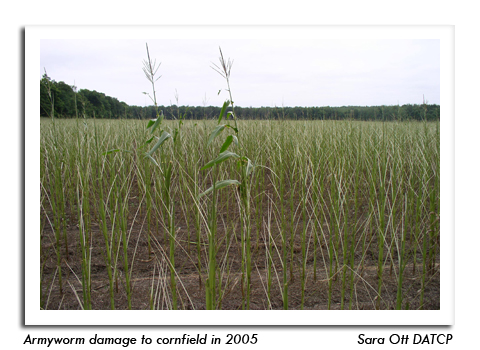
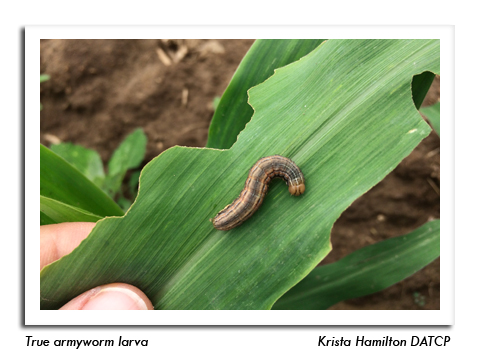

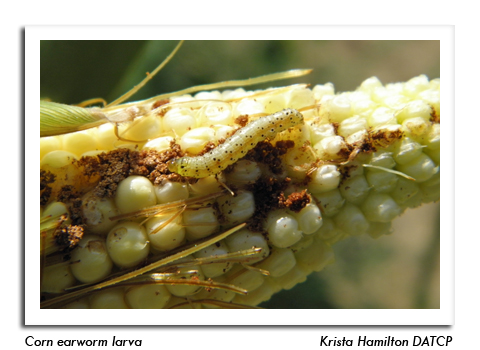
|
|
|